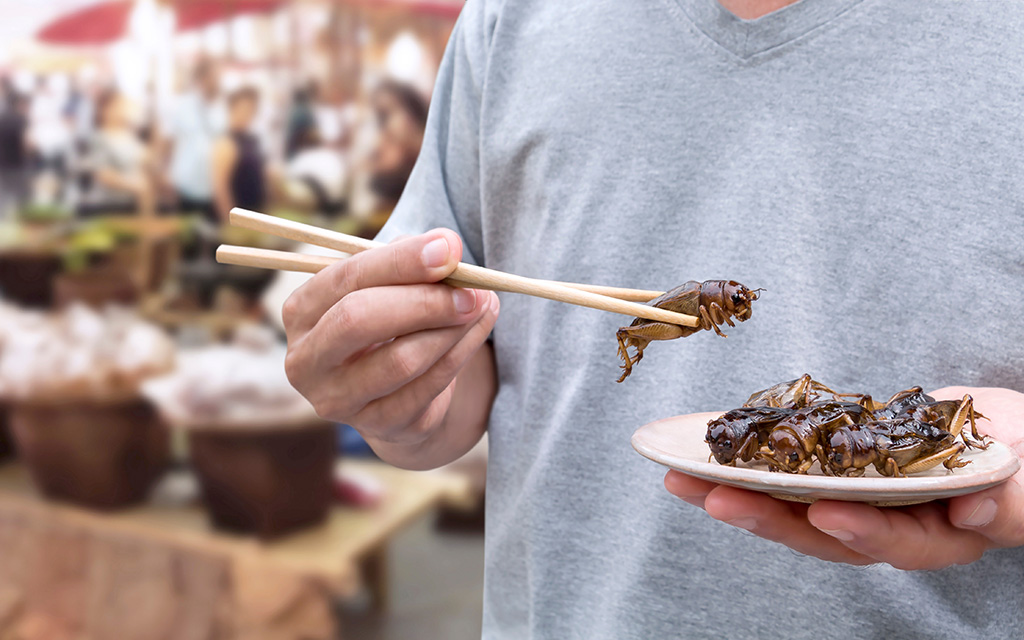As the world grapples with feeding a growing population with dwindling resources, the solution could rest with an unlikely ally: arthropods.
Though crustaceans—like shrimp and lobster—fall into this category and are common fare around the world, they aren’t viable for long-term, sustainable farming. Instead, it’s their arachnid and insect cousins that could be the answer to providing nutrient-rich food to a growing world.
Ray Fisher with the MSU-headquartered Mississippi Entomology Museum explained that farming insects uses fewer resources and creates a greater return than current practices for raising cattle, pigs or chicken. It also produces fewer harmful emissions and byproducts.
Still, even though entomophagy—the human consumption of insects—has been common throughout history and is still common across the globe, it hasn’t gained widespread acceptance in America. Fisher says it’s a problem that comes down to marketing.
“We grow up thinking that eating insects is gross instead of it just being part of our diet like it is in other parts of the world,” Fisher said. “And it’s not that they’re eating insects because that’s all that’s available. It’s often a staple, sometimes even a delicacy. Even here, gourmet, insect-based dishes and restaurants are popping up in big cities across the country.”
Fisher said that like any food, making palatable insect dishes comes down to preparation. His preference is to remove the wings and legs, although he notes that the legs of some species contain a lot of meat.
“Insects are versatile and take up flavor really well,” Fisher said. “You can fry them with a little salt and pepper or try stronger spices like curry or cumin.”
He notes that grasshoppers and crickets are a good place to start for anyone interested in trying insect-based cuisine. Cicadas, which create the soundtrack for Southern summers, are also an abundant and versatile food source, and cricket flour is available from specialty food stores.
He offers the following tips for harvesting your own insects:
For human consumption, only get insects from environments free of pesticides or other environmental contaminates. This can be your own yard, if you don’t use dangerous insect-control or lawn-care chemicals, or natural areas that don’t have a lot of human interference.
Consider purchasing crickets from pet-supply stores. These are usually farmed and should be safe to consume if cooked.
“It’s all about perception and how it’s prepared,” Fisher added. “You wouldn’t just eat a handful of flies or have one land in your soup and think it was good. But with the right preparation, seasoning and an open mind, insects can be as much of a delicacy as lobster. Just play around with it and find out what tastes good. And feel good that you’re eating an environmentally friendly, sustainable meal.”


